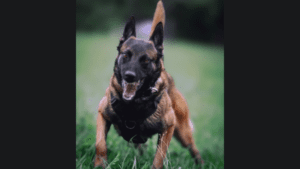Working Dogs: More Than Just Man’s Best Friend
When you hear “working dogs,” you might conjure images of German Shepherds in police vests or Saint Bernards rescuing stranded mountaineers. Yet, the reality is that the realm of working dogs is far more diverse and intriguing than many people realize. These dogs are not merely companions but diligent workers trained to perform specific tasks, ranging from herding livestock to assisting people with disabilities.
A Broad Spectrum of Skills
“Working dogs” is an overarching term that includes a variety of breeds, each specializing in particular tasks. Herding breeds like the Border Collie and Australian Shepherd excel in controlling the movement of livestock. They are known for their agility, intelligence, and strong work ethic—traits that make them invaluable assets on farms and ranches.
In sharp contrast, guardian breeds such as the Hungarian Kuvasz serve to protect livestock from predators. Unlike herding breeds, guardian dogs don’t guide the animals; instead, they watch over them, providing a first line of defense against wolves or thieves. Their protective instincts make these working dogs unsuitable for inexperienced owners. A guardian dog’s loyalty and bravery are remarkable but require expert handling to channel these traits effectively.
K9 Units: Guardians of Public Safety
Law enforcement roles often come to mind when you think of working dogs. You can almost picture a German Shepherd or a Belgian Malinois in a cute little police vest. Maybe “cute” isn’t the right word; these dogs mean serious business. They’re trained to tackle some pretty intense jobs like sniffing out drugs or explosives, capturing bad guys, and even being a part of search and rescue operations. It isn’t a stroll in the park for them; they undergo tough training to handle the chaos and pressure of law enforcement work. And get this: They even get their badges and vests, making them bona fide force members.
Agility Trials: Showcasing Skill and Intelligence
Working dogs also shine in the arena of agility trials. Specifically, breeds like Border Collies demonstrate their agility and quick thinking in navigating various obstacle courses. These events are not just games; they are serious competitions that display working dogs’ intelligence, speed, and agility. Participation in these trials often enhances the bond between the dog and its handler, revealing the depth of understanding and communication that can be achieved between a human and a canine.
Service and Therapy: Enhancing Lives One Wag at a Time
The scope of tasks that working dogs perform extends into the realm of personal assistance. You can train service dogs to help people with various disabilities, including visual impairment, hearing loss, and even conditions like epilepsy. Their training is specialized to the needs of their handler, making each service dog’s skill set unique.
So, therapy dogs may not precisely get called “working dogs,” but trust me, they’re doing some essential work. Picture this: You’re going through a hard time, maybe in a hospital or a nursing home, and this incredibly chill dog comes in. Just like that, you feel a weight lift. These dogs are trained specifically to help humans relax and feel more hopeful, even in stressful or emotional situations. They might not be herding sheep or sniffing out contraband, but they’re doing something equally valuable: lifting spirits. You’ll see them working their magic everywhere, from schoolrooms to hospices.
Alright, that wraps up the first part of this chat we’re having about working dogs. We’ve looked broadly at all the different gigs dogs have these days. But hang tight because we’re far from done.
From Breeding to Training—The Making of a Working Dog
Breeding Excellence
The breeding of working dogs is a practice steeped in history and precision. Unlike companion dogs, who are often selected based on appearance or disposition, working dogs are primarily bred for their skills and work ethic. For instance, Border Collies are bred for intelligence and agility, vital traits for herding livestock efficiently. Similarly, German Shepherds are selectively bred for their courage, intelligence, and physical prowess, all essential qualities in law enforcement.
Puppies and Early Training
The making of a working dog often starts at puppyhood. Early socialization and basic obedience training lay the foundation for more specialized training. Some working dogs, particularly livestock guardian breeds like the Hungarian Kuvasz, begin their field education, getting used to the animals they’ll eventually protect. The early introduction to their future responsibilities can significantly affect how well they’ll perform as adults.
Advanced Training Techniques
As working dogs mature, they undergo advanced training tailored to their specific roles. It could involve agility courses, targeted scent detection, or simulated rescue scenarios. This rigorous training is critical to their development, often taking several months or even years to complete. It’s an investment of time and resources, but the payoff is a highly skilled animal capable of performing complex tasks under stressful conditions.
The Human-Canine Partnership
What truly sets working dogs apart from other dogs is their extraordinary relationship with their human handlers. This partnership is a powerful symbiosis where both parties understand and complement each other. Police K9 units are perfect examples of this relationship. The dog and the handler train, work, and often live together. This closeness fosters a deep bond of trust and mutual respect vital for their dangerous and demanding work.
Working Dogs in Pop Culture
The public’s admiration for working dogs has spilled over into popular culture. Films, books, and TV shows often portray these canines as heroes, further elevating their societal status. Lassie, Rin Tin Tin, and even modern tales like “K9” showcase the courage and intelligence of these remarkable animals.
Adapting to Civilian Life
Although they are bred for work, many working dogs adapt well to civilian life after retirement. Their discipline and training often make them excellent pets, provided they are integrated into family life carefully and gradually. However, it’s important to remember that a retired working dog is unlike other dogs. They’ve had a career with responsibilities and tasks that gave them purpose. Transitioning them into a less structured life requires patience, love, and, often, some retraining.



